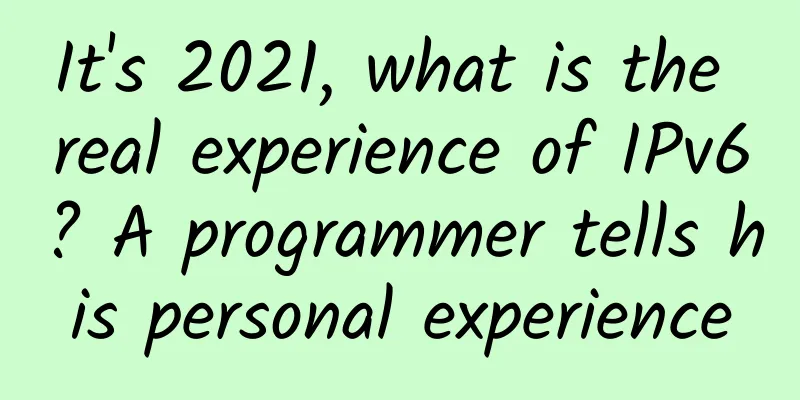5G is here—what’s next?

|
As 5G standards are finalized and 5G-enabled devices begin to hit the market, we will increasingly feel the impact of 5G. However, this is just the beginning of this exciting new era of wireless technology…
December 2017 marked an important milestone for the next generation of wireless standards - the first half of the first phase of the 5G New Radio (5G NR) standard has been approved by 3GPP, and the second half of the first phase of 5G NR was finalized at the end of June this year. With the finalization of the standard, commercial equipment and infrastructure built around this release standard are undergoing field trials and pre-release tests. All of this means that the commercial promotion of 5G is getting closer. At the Mobile World Congress (MWC) held in February this year, many companies demonstrated the high speeds promised by 5G and cool applications such as virtual reality (VR). The 2018 MWC was impressive compared to 2017. One of the most impressive aspects of 5G is that it is not just a new mobile standard, but an ecosystem covering a wide range of industries and applications can be built around the standard. Unlike previous standards, the 5G standard intentionally includes performance metrics to support applications beyond traditional mobile broadband scenarios. Of course, there are performance metrics for improving 5G enhanced mobile broadband, but there are additional performance metrics for regulating the number of devices that can be connected to the network at the same time, and target values for latency are also defined. The increased device connectivity will help to significantly expand the scale of the Internet of Things (IoT) and Industrial Internet of Things (IIoT) to a level that is simply not possible with today's LTE capabilities. The latency specifications are aimed at applications that require deterministic communication (such as any application involving human life) or applications where technology will interact with humans in real time. While the specifications in these three areas each enable new and expanded application scenarios, combined, the three areas will build a rich application ecosystem around 5G. The table below shows how different applications can take advantage of different performance metrics of 5G. Figure 1: 5G applications and technical requirements As mentioned above, the standards released by 3GPP in December last year and June this year are just the first versions, and there will be more versions in the future. 5G will follow a similar design cycle to LTE. There have been several versions of the standards for LTE over the past 9 years, and they have been updated many times. LTE was first proposed in 3GPP Rel-8. Currently, 3GPP is working to complete Rel-15. Rel-15 will include 5G NR specifications. In December 2017, the first version of the 3GPP 5G non-standalone (NSA) standard was officially frozen, and the full version was frozen in June this year, which not only includes 5G NR NSA, but also incorporates the standalone (SA) standard. The NSA use case of 5G NR is very important because it will operate using the core network of LTE. This means that the operation of 5G NR NSA does not require the launch and installation of new infrastructure, and the SA version will use the 5G core network and will most likely require the installation of new network equipment. In the coming months, researchers will be working hard to finalize the standards for the 5G NR SA use case, and once the standards are released, equipment vendors will need to design hardware that can support the standalone use case. Figure 2: 3GPP release schedule 2018 is going to be an exciting year for 5G. In addition to 3GPP Rel-15, there will be more 5G deployments in the consumer market. At MWC 2018, Huawei demonstrated a 5G base station, Samsung demonstrated its interoperability device testing (IODT) based on a 28 GHz 5G NR base station, and Qualcomm demonstrated IODT for its 28 GHz UE based on Ericsson and Nokia base stations. These demonstrations show that the hardware of equipment vendors is almost ready to deploy, and Qualcomm emphasizes in bold on its website that it is committed to making 5G a commercial reality in 2019. As 5G becomes more widely used, a host of new technologies and applications built around 5G will begin to emerge. The unique provisions for latency and capacity in the official 5G specifications have made applications that sounded far away a few years ago now within reach. VR is a good example. If you want to get the full VR experience, there are some important factors to consider. First, users need a full 360-degree high-resolution (HD) view to explore the virtual world. This means that the camera must continuously capture 360-degree HD video, and then transmit this video from the camera location back to the cellular base station to be transmitted to the end user. The high data rates promised by 5G can easily accomplish this task and provide enough throughput to transmit to multiple users simultaneously. Another very important aspect of VR is latency. For example, when someone turns on a VR helmet and turns their head, the surrounding virtual environment also needs to be transformed within 1 millisecond (ms). If the latency is greater than 1 millisecond, the human brain will perceive this delay and most people will experience severe dizziness. VR can be achieved through cellular networks due to 5G's combined improved mobile broadband speeds and latency specifications below 1 millisecond. VR has been around in some form for years, but the ability to do it over cellular networks will open up new possibilities for VR. One popular application for VR is sports. Imagine experiencing a football game from the perspective of a player on the field, or watching the game online from the 50th mark of a stadium virtually. The technology was demonstrated on a small scale at the PyeongChang Olympics earlier this year. 100 cameras were placed on an ice rink, with live data transmitted back to a 5G technology venue in real time. People in the venue could wear VR headsets and experience skating activities like the athletes on the ice.
Figure 3: Intel demonstrated the TrueVR system at the 2018 Winter Olympics 5G’s ability to connect up to 100 times more devices to the network will make IoT and IIoT a reality. To some extent, the Internet of Things exists today, and more and more devices are being connected to the Internet. For consumers, these devices vary from practical to fun and even downright weird. But for industry, IIoT offers many exciting new features and capabilities for smart factories. Every machine and device in a manufacturing plant will be able to continuously report its health statistics and efficiency, so aging equipment can be repaired before it breaks down, avoiding problems altogether. When IIoT is combined with augmented reality (AR), machine learning, and artificial intelligence (AI), technicians will be able to view machine status and information through AR glasses or tablet computers on site, and AI can help diagnose problems quickly. 5G will make it possible to achieve faster, more affordable, and safer manufacturing in the future. Self-driving cars are probably one of the hottest and most anticipated applications that 5G will enable. Currently, vehicles drive themselves using a combination of sensors, photos, and video processing. Future self-driving cars will still need to be equipped with many sensors and be able to process the data from them, but vehicle communications are essential for large-scale deployment of self-driving cars. In short, vehicles need a way to communicate with each other. Vehicle-to-vehicle communications will be used to share data about road and environmental conditions as well as route information, such as expected stops or left turns. In addition, vehicles will need to be able to communicate with many different types of devices, such as cellular base stations, and other smart devices, such as smart lamp posts or road signs, which can transmit road conditions or environmental data to passing vehicles. This research topic is called vehicle-to-everything (V2X) communication. 5G latency specifications are critical to getting information to vehicles. For example, if the delay is too long due to too much information waiting to be processed in the communication link, the car will not have time to brake when an obstacle appears on the road, which may cause passengers to be injured or killed. Therefore, ultra-reliable communication (uRC) for V2X is essential. The big data throughput provided by 5G will also play an important role in V2X. A car at a traffic light can download and upload information about its current location from a nearby base station. This makes the car a collector of sensor data, but the data processing may be handled at the base station or even in the cloud. As processing technology improves, updated information will be pushed to the cellular network infrastructure, and older vehicles can still take advantage of these updates without changing their hardware. While the current version of the 3GPP specifications does not include any specifications for V2X, 5G is an evolving standard and the December 2016 release is only the first of many. The timeline in Figure 1 shows that Rel-16 will be released in late 2019, which represents Phase 2 of 5G NR. Studies currently being explored in Phase 2 include Integrated Access Backhaul (IAB) for centralized backhaul processing, which aims to address unlicensed spectrum sharing challenges in mobile communications, and V2X. 3GPP expects to address these and many other topics in Phase 2. While 5G will be available in commercial products in late 2018 and 2019, research on 5G is still ongoing. As 5G standards solidify and 5G-enabled devices begin to hit the market, we will increasingly feel the impact of 5G on the world, as it becomes an integral part of many aspects of daily life, from entertainment to smart cities. It is certain that we are only at the beginning of an exciting new era of wireless technology. |
Recommend
What is the handshake process like when connecting to a host whose IP does not exist?
[[410045]] This article is reprinted from the WeC...
DediPath VPS Hosting 35% off, Los Angeles 1Gbps unlimited traffic high-security dedicated server starting at $39/month
DediPath has launched a new promotion, offering a...
What is the situation of my country’s Internet network security in 2017?
Recently, Yun Xiaochun, deputy director and chief...
Huawei Cloud and Ground Collaboration Accelerates the Commercialization of Network AI and Enables Autonomous Driving Networks
[51CTO.com original article] On September 23, 202...
Rooted in China for 20 years, F5 "Code to User" Online Summit kicked off grandly
[51CTO.com original article] On May 20, 2020, F5,...
5G mobile phones start at 8,000 yuan. Use WiFi to experience 5G network first
Terminals that support 5G will be launched in 201...
Be careful when using Wi-Fi, ES File Manager will wipe out all your data
[[255972]] If you use the popular file explorer a...
Operators push 5G, there are many inside stories about number portability, and 315 regulars will also be on the list
[[387481]] Editor's note: The operators who p...
The country's first Wi-Fi 6 subway is built! Tired of hearing about 5G? Let's learn about the 6th generation of WiFi!
Recently, Shenzhen Metro Futian Hub became the fi...
How low-code platforms enable machine learning
【51CTO.com Quick Translation】 [[425497]] Low-code...
Will 5G be the next disruptive technology?
The telecommunications industry likes to use the ...
Tian Suning's predictions for the 5G era: more scenarios, more ecosystems, and more risks
From November 7 to 9, the fifth World Internet Co...
Uncovering the Cost of Cyber Attacks in the 5G Era
With the advent of the 5G era, smart IoT devices ...
DediPath has a 25% discount on the first month, VPS starts at $0.87 for the first month, multiple data centers in Los Angeles/New York, etc.
DediPath has launched a 25% discount promotion fo...
Distributed ID Solution Detailed Explanation
In a distributed system, it is very important to ...









